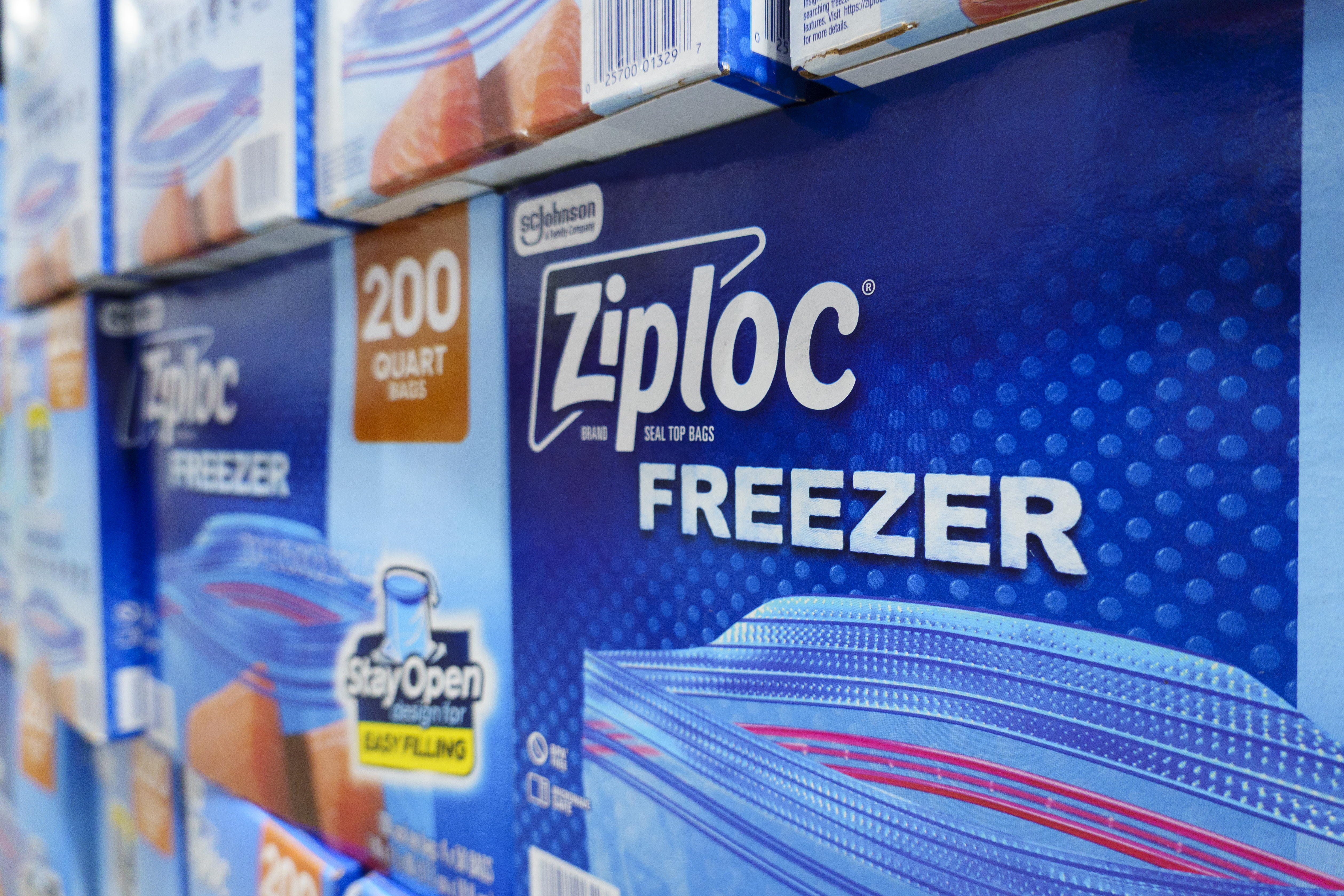Ziploc Lawsuit: Hidden Microplastics Harming Your Family?
Ziploc Under Fire: Microplastics Lawsuit Shakes Up Kitchens Nationwide
Introduction: Are Your Ziploc Bags Secretly Harming You?
We all trust Ziploc bags, right? They're a kitchen staple, sealing our leftovers, prepping our lunches, and freezing our precious ingredients. But what if I told you those seemingly innocent bags might be harboring a hidden danger? A recent class action lawsuit against S.C. Johnson & Son, the makers of Ziploc, alleges just that: undisclosed microplastics leaching into our food from Ziploc bags. This has left consumers questioning everything they thought they knew about food storage. So, let's dive into the details and see what this lawsuit is all about.
Why the Lawsuit? The Microplastics Allegation
The core of the lawsuit, filed by Linda Cheslow of California, revolves around the claim that Ziploc bags release microplastics when used as intended - specifically when frozen or microwaved. The lawsuit alleges that S.C. Johnson’s claims that their products are freezer- and microwave-safe is, in essence, misleading.
What Exactly Does the Lawsuit Claim?
The lawsuit highlights the assertion that the bags, made from polyethylene and polypropylene, release microplastics during routine kitchen practices. Think about it: how many times have you microwaved leftovers in a Ziploc bag or frozen soup for a later date? If the allegations are true, we could be unknowingly ingesting tiny plastic particles. The suit names specific Ziploc products, though the details are being updated as the case progresses.
"Unfit for Microwave and Freezer Use"?
The lawsuit goes as far as to state that the materials used render the bags "fundamentally unfit for microwave and freezer use." That’s a pretty strong statement! If proven accurate, it could have significant implications for S.C. Johnson and for consumers who rely on these products daily.
Microplastics: What are They and Why are They a Concern?
Okay, so we're talking about microplastics, but what *are* they? Microplastics are tiny plastic particles, typically less than five millimeters in size. They come from a variety of sources, including the breakdown of larger plastics, microbeads in personal care products, and, potentially, the degradation of plastic food storage containers.
The Potential Health Risks
The biggest question is: are microplastics harmful? While research is still ongoing, some studies suggest they could pose health risks. These risks could include:
- Inflammation: Microplastics might trigger inflammatory responses in the body.
- Endocrine Disruption: Some plastics contain chemicals that can interfere with our hormones.
- Uptake of Toxic Chemicals: Microplastics can absorb pollutants and potentially transfer them to our bodies.
It's in the Food Chain
The scary part is that microplastics have been found everywhere – in the ocean, in the soil, and, increasingly, in the food we eat and the water we drink. It's a pervasive problem, and this lawsuit brings the issue right into our kitchens.
S.C. Johnson's Response: What Do They Say?
As of now, S.C. Johnson has released a statement standing by the safety of their products. They maintain that Ziploc bags are safe for their intended uses, including freezing and microwaving, when used according to the provided instructions. They state they are committed to product safety and quality and that they will vigorously defend themselves against the claims in the lawsuit.
"Safe When Used as Directed"?
The key phrase here is "when used as directed." Does that provide enough clarity for the average consumer? Do people diligently read and follow the instructions every time they use a Ziploc bag? It's a point that will likely be scrutinized during the legal proceedings.
The Freezer and Microwave Dilemma: Are These Uses Really Safe?
This lawsuit really zeroes in on the freezer and microwave claims. Think about the temperature fluctuations these bags endure! From sub-zero temperatures in the freezer to the intense heat of a microwave, are these bags really up to the task without leaching harmful substances?
Freezing Foods: The Cold Truth
Freezing can make plastics brittle, which can lead to microplastic shedding when the plastic is flexed or handled. When thawing or reheating, this shedding may increase.
Microwaving Madness: High Heat and Plastic
Microwaving raises even more concerns. The high heat can cause plastics to break down more quickly, potentially releasing more microplastics and chemicals into the food. It's like putting a plastic container into overdrive – it will eventually start to degrade. Should we rethink microwaving food in plastic altogether?
The Class Action Lawsuit: What Does it Mean for Consumers?
So, what does this class action lawsuit mean for you and me? Well, if you've purchased Ziploc bags and believe you've been harmed by microplastic exposure, you may be eligible to join the class action. A class action lawsuit is a legal mechanism that allows a large group of people with similar grievances to sue a defendant together.
Potential Outcomes: What Could Happen?
The outcomes of this lawsuit are varied. It could lead to:
- Settlement: S.C. Johnson could reach a settlement with the plaintiffs, offering compensation or changes to their product labeling.
- Dismissal: The court could dismiss the case if it finds the claims lack sufficient evidence.
- Trial: The case could go to trial, where a judge or jury would decide the outcome.
What Should Consumers Do?
For now, it's wise to stay informed and be cautious. If you're concerned about microplastics, there are steps you can take to minimize your exposure. We’ll talk more about those in a bit.
Alternatives to Plastic: Safer Food Storage Options
Want to play it safe? Luckily, there are plenty of alternatives to plastic food storage containers. Here are some popular options:
Glass Containers: A Classic Choice
Glass is a great option because it's non-reactive, meaning it won't leach chemicals into your food. Plus, it's durable and easy to clean.
Stainless Steel: Durable and Safe
Stainless steel containers are another excellent choice. They are durable, lightweight, and won't leach chemicals.
Silicone Bags: A Flexible Option
Silicone bags are a flexible and reusable option that is generally considered safe for food storage. Look for food-grade silicone to ensure quality.
Beeswax Wraps: An Eco-Friendly Alternative
Beeswax wraps are a natural and sustainable alternative to plastic wrap. They are made from cotton fabric coated with beeswax, tree resin, and jojoba oil.
Minimizing Microplastic Exposure: Practical Tips
Even if you use plastic sometimes, there are ways to reduce your potential exposure to microplastics:
Avoid Microwaving Food in Plastic
This is a big one! Transfer your food to a glass or ceramic container before microwaving.
Don't Freeze Hot Food in Plastic
Let food cool down before storing it in plastic containers, especially in the freezer.
Choose High-Quality Plastics
If you do use plastic, opt for higher-quality, BPA-free options. While they may still release microplastics, they might be less prone to degradation.
Filter Your Water
Use a water filter that is designed to remove microplastics from your drinking water.
Wash Produce Thoroughly
Rinse fruits and vegetables thoroughly to remove any potential microplastic contamination.
The Bigger Picture: Addressing Plastic Pollution
This lawsuit highlights the larger issue of plastic pollution and its potential impact on human health. We need to address the root cause of the problem by reducing our reliance on single-use plastics and promoting sustainable alternatives. It all starts with conscious choices and collective action!
Reduce, Reuse, Recycle
Remember the mantra: Reduce, reuse, recycle. This applies to all aspects of our lives, from food storage to shopping habits. Small changes can make a big difference.
Support Sustainable Practices
Choose products from companies that are committed to sustainability and reducing their plastic footprint.
The Future of Food Storage: What's Next?
This lawsuit could be a turning point in how we think about food storage. It might encourage consumers to be more mindful of the materials they use and prompt manufacturers to develop safer and more sustainable options. The future of food storage may look very different in the years to come!
Conclusion: Stay Informed and Make Informed Choices
The Ziploc microplastics lawsuit raises some serious questions about the safety of our everyday kitchen practices. While the legal proceedings unfold, it's essential to stay informed, be mindful of your choices, and explore safer alternatives for food storage. Your health is worth it! Whether or not this lawsuit changes the industry, it's a good reminder to consider the impact of our actions and strive for a more sustainable future.
Frequently Asked Questions (FAQs)
Here are some frequently asked questions about the Ziploc microplastics lawsuit:
Q: What Ziploc products are named in the lawsuit?
A: While the specific Ziploc products mentioned in the lawsuit may vary as the case progresses, the suit generally targets Ziploc bags marketed as freezer-safe and microwave-safe. Always refer to the latest court documents for the most up-to-date information.
Q: How do I join the class action lawsuit?
A: If you believe you have been affected, you can contact the law firm representing the plaintiffs in the case. They will be able to provide you with information on how to join the class action.
Q: Are all plastic food storage bags unsafe?
A: Not necessarily. However, this lawsuit highlights the potential risks associated with microwaving and freezing food in plastic bags. It's best to research and choose safer alternatives, especially when heating food.
Q: What are the best alternatives to Ziploc bags?
A: Glass containers, stainless steel containers, silicone bags, and beeswax wraps are all great alternatives to plastic Ziploc bags. They are generally considered safer and more environmentally friendly.
Q: What can I do to reduce my overall exposure to microplastics?
A: Avoid microwaving food in plastic, filter your drinking water, wash produce thoroughly, and choose products with minimal plastic packaging. Small changes can make a big difference!

